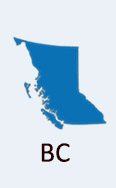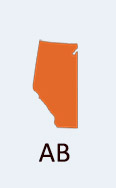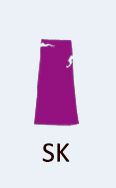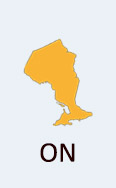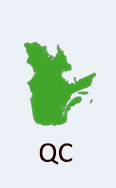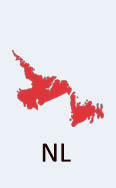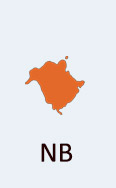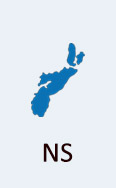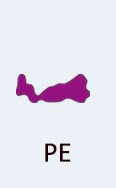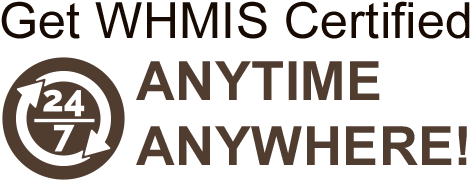| TRAINEE LOGIN | | | EMPLOYER / BILLING LOGIN | | | CONTACT US |
Northwest Territories & Nunavut WHMIS Training & Certification
WHMIS stands for Workplace Hazardous Materials Information System and is Canada’s a guide to safe use, handling, and storage of the hazardous materials found workplaces. WHMIS is intended to ensure that workers are aware of the risks surrounding hazardous products, and what to do in case of emergency.
The 2015 update brought WHMIS into alignment with the Globally Harmonized System of Classification and Labeling of Chemicals (GHS) agreed upon by the United Nations and its supporters. Canada can now say that their nationally coordinated program for hazardous product education delivered to workers is the same as many other countries who have aligned their communication under the GHS. This uniformity, nationally and internationally, creates a network that increases the safety of workers and the general public.
Canada’s federal legislation supports the GHS under the Hazardous Products Act and the Controlled Products Regulations. These laws are interpreted through provincial legislation as well and it is the provinces and territories that are responsible for enforcing the laws, using WHMIS.
In the Northwest Territories, Nunavut and the other provinces and territories, the local legislations and regulations are covered in the Northwest Territories and Nunavut Safety Act and the Occupational Health & Safety Regulations, Part 22. These laws outline the constitutionality of WHMIS and show the importance of creating a WHMIS program that uses safety data sheets (SDS), product labels, and worker education programs.
As an employer in Northwest Territories or Nunavut, do I need to educate and train my employees on WHMIS?
The simple answer to this question is Yes, employers must educate and train employees about hazardous products in their workplace. Training programs, developed in conjunction with the Joint Health and Safety Committee in the Northwest Territories, exist to assist with the task of educating employees and creating a WHMIS program. Employers should connect with the local authority or government initiative in their area, if possible.
Many companies choose to select one person at the workplace to take on the responsibility of instigating and maintaining the corporate WHMIS program.
A WHMIS program needs to include a strategy to monitor and maintain correct Safety Data Sheets (SDSs) and labels for all products containing hazardous chemicals. Labels must be legible and up to date with WHMIS 2015. SDSs containing information about the risks associate with each hazardous product, its storage and applicable disposal information, as well as emergency protocols must be visible and available to all employees.
Employees need to receive education that covers all areas of WHMIS, as well as pass an evaluation so that employers are confident in their understanding of the knowledge provided. A general overview provided by a credible training organization can provide testing which results in the issuance of a Generic WHMIS Certificate.
Upon completion of Generic WHMIS training, employees need to be able to read and understand labels and SDSs, with their respective pictographs and written language instructions.
In addition to general WHMIS knowledge, employers are also responsible for making sure employees receive worksite specific training, if applicable, on how to work safely with any hazardous products when conducting their particular job operations. Employers need to provide the appropriate equipment for doing the job safely, as well as personal protection equipment to reduce risks of exposure appropriately.
If any workplace conditions or job responsibilities change for an employee, it is up to the employer to identify any areas where employees would need to receive additional training.
How frequently do I need to train my workers on WHMIS in Northwest Territories or Nunavut?
As set out by the Northwest Territories and Nunavut Workers’ Safety and Compensation Commission, any employers who have hazardous products in the workplace or who have employees who come into contact with hazardous products must demonstrate that they have a clear WHMIS program in place – and must review their WHMIS program annually.
This is contingent upon any updates to WHMIS. For example, if there is information released with updates to any part of the existing WHMIS materials, such as labels or SDSs or emergency protocols, employers must provide training more frequently than annually. Similarly, if there are changes in the workplace conditions or products available to workers in the workplace, employers must provide training more frequently.
Do I need to have a WHMIS Certificate for my employees?
The Northwest Territories and Nunavut WHMIS laws currently do not require employers to issue a Generic WHMIS Certificate to employees. However, the laws require employers to have provided WHMIS training and that employees can demonstrate that appropriate knowledge has been retained to perform duties safely.
Representatives from the Northwest Territories and Nunavut Workers’ Safety and Compensation Commission, managers from other worksites, or any concerned citizen, can request to see proof that your company has a WHMIS program that is maintained and up to date. This means that the employer needs to be able to show proper labeling, current SDSs that are accessible to employees, and that employees have received training. One way to ensure that employees can quickly and easily provide a proof of their training is to issue a Generic WHMIS Certificate to each employee.
Having a WHMIS Card or Certificate is usually considered an acceptable method for contract workers, or workers who work off site (not only at their own location), to provide documentation that represents the training they have received.
A Generic WHMIS Certificate typically includes the name of the employee, the workplace name, the name of the WHMIS training organization, what type of training was issued, and the date of the completion of the training (with the test result of the training, if applicable). The name of the WHMIS training organization is important so that any investigators can quickly discern if the training was provided from a reputable source.
When you have questions about local WHMIS requirements, you can contact the jurisdiction that regulates WHMIS for In the Northwest Territories and Nunavut. More information is available in the PDF document titled "Occupational Health & Safety Regulations", provided by the Northwest Territories and Nunavut Workers’ Safety and Compensation Commission website.





